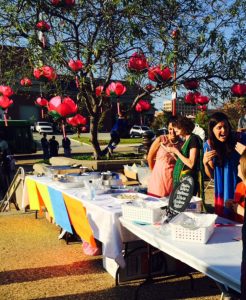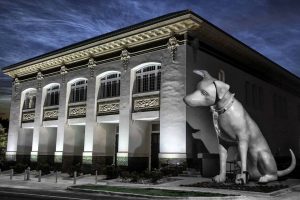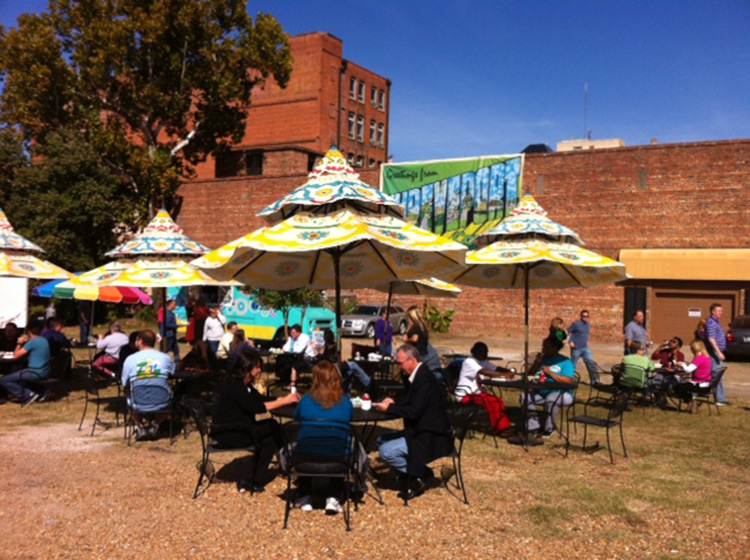Editor’s note: We are including a link to a survey that Shreveport Regional Arts Council wants your help with to shape the future Shreveport Common. Visit this link to take the 5 minute survey.
In the March 2014 issue of Heliopolis, I was delighted to see that the lexiconic duo Chris Lyon and Stephen Pederson chose to highlight Creative Placemaking in theShreveport Progress Report. As an administrator of Shreveport Common, I was tickled to see them brag on our UNcommon cultural community as a success-in-the-making, and I am eager to take y’all from their 101 to a little bit more in-depth look at what Creative Placemaking means, in the context of Shreveport.

Creative Placemaking as a concept has been around for a decade at least, as a lovechild of the Arts and Planning fields. As a bona fide field of practice, it’s even newer, so you can imagine there aren’t too many Creative Placemaking Master Practitioners rattling around. Well, not only does Shreveport local Wendy Benscoter boast just those credentials as a graduate of the Rutgers University Creative Placemaking Master Practitioner Certificate program, she is an instructor of the program, now offered through Ohio State University’s Knowlton School of Architecture and Planning. She is the Louisiana rep for the National Consortium of Creative Placemaking, and (my colleague) Project Director for Shreveport Common.
Benscoter knows firsthand the importance of community action in Creative Placemaking, but adds that, “It is the arts and artists that are bringing together, inspiring, motivating, bridging that community effort” creating teams of unlikely partners such as City, Parish, artists and arts organizations, transportation, park experts, social service organizations, non-profits, public, private, and national funders.
These partnerships leverage the sum of its parts to be bigger than the whole. A great example is the City of Seattle. By embedding an artist into their transportation department, they learned what barriers and opportunities exist to merge transport and the Arts, resulting in a kick-arse Art Plan that creates “more humane, layered, beautiful, and relevant transportation system.”
“The key is artists as an important – and paid – member of the team from the very beginning,” Benscoter adds, “From how the community is heard, to neighbor engagement, to how a park or transportation center is innovatively designed, to keeping the neighbors and community engaged in new and creative ways once the space is built.”
And how are we faring in this regard? Are we really 7+ years away from anything tangible, as the boys suggested?
Well, I ride my bike every day past the iconic restored Municipal Auditorium, Oakland Cemetery, new Grand Promenade, and see creative businesses where before there were empty spaces. And it’s the process that MIT calls Shreveport Common, “one of the leading examples of Creative Placemaking in the country” that got us here.
Benscoter thinks the completion of Caddo Common Park will be the most visible change. Already, the collaborative efforts of City/Parish/Shreveport Regional Arts Council have succeeded in purchasing land, funding the design, putting out a call that resulted in a bonza design team of landscape architects, an architect, three professional artists, and electrical and civil engineers. This is a public space unlike anything ever seen.
 “Shreveport will see a design that checks all the boxes for community use – creatively, environmentally and sustainably, all in VERY surprising ways.” Benscoter predicts. And the beauty part of Creative Placemaking is: unique, creative, and authentic projects like this beget more creative developments, drawing more people to the area which leads to self-sustaining growth. Caddo Common Park is fully designed, in the funding stage, and we expect to have a concrete timeline (rather than just concrete) before year’s end.
“Shreveport will see a design that checks all the boxes for community use – creatively, environmentally and sustainably, all in VERY surprising ways.” Benscoter predicts. And the beauty part of Creative Placemaking is: unique, creative, and authentic projects like this beget more creative developments, drawing more people to the area which leads to self-sustaining growth. Caddo Common Park is fully designed, in the funding stage, and we expect to have a concrete timeline (rather than just concrete) before year’s end.
So Shreveport, rest assured that we are not laggards, nor followers, when it comes to Creative Placemaking. But that begs the question, where are we going with this ever-evolving new “eye” for City development?
For one thing, Creative Placemaking has shifted from desired outcomes that were mostly economy-based to an equal emphasis on community and cultural development. Hindsight is 20/20, says Benscoter, who works with the gurus of the craft, Tom Borrup and Leo Vazquez, and believes that this holistic Social/Economic/Cultural trinity of growth is where the key lies to thriving communities without the peril of gentrification. And that’s something that, going forward, we can’t be cagey about discussing.
This article was originally published in a Spring 2015 print issue. In 2016, Shreveport Common, now $39M invested in the $100M revitalization, was named the #1 Community Development Project in the Nation by the National Development Council Academy.

